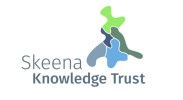Once you have selected “Add dataset”, you will be brought to the new dataset page. It is important to complete all the metadata fields to maximize the utility of your dataset by making it discoverable and interpretable by others. Please review and adhere to the following conventions when describing new datasets and follow the guidance provided on when to create a single dataset with multiple resources or multiple datasets. An example of a completed metadata form is shown at the bottom of this page.
| Title |
| The title should be the exact title of the report, linked webpage, or map. For datasets without a specified title, enter a descriptive title, e.g. 2014 Lake Kathlyn Secchi, Dissolved Oxygen, and Temperature Data. If the title is very long, you may need to shorten the unique URL generated (Click the Edit button under the title entry). Title syntax:
|
| Description |
Provide a short description of the dataset.
|
| Tags |
| Tags are keywords relevant to the dataset that will enable users to find the dataset in the Skeena Salmon Data Centre using the search function, or by filtering on tags. See Tag Vocabulary for a listing of tags currently in use, along with descriptions of each tag. When entering tag:
|
| License |
| A license tells users how the data, information, or material can be used. Licenses describe how the owner explicitly grants users permission to use their work. See the overview of licenses by the Creative Commons for an explanation of the differences in licenses. If you need to use a license not provided in the drop-down menu, please contact us at info@skeenatrust.ca. |
| Organization |
| Select the organization associated with the dataset from the drop-down menu. This is usually the data owner or publisher. If there is more than one publisher or funder, use the one first listed in the document. If the organization does not exist, please contact us at info@skeenatrust.ca to request the creation of a new organization. |
| Visibility |
| Dataset visibility may be set to public or private. A dataset set to public can be seen by anyone using the Skeena Salmon Data Centre. When the visibility is set to private, the dataset is only discoverable by members of the organization associated with the dataset and will not be visible to other users. |
| Source |
| Add URL link to original data source if applicable. |
| Version |
| Add version number if applicable. |
| Author |
Enter the name of the person(s) or organization responsible for producing the data in the following format:
|
| Data Steward |
| Enter the data steward if different from the organization. This identifies who is responsible for responding to data share requests. |
| Publication year |
| Add the year that the dataset was published. |
After metadata is completed, select “Next: Add Data:” to continue the dataset creation by adding resources.
Example of a completed metadata form:





Post your comment on this topic.